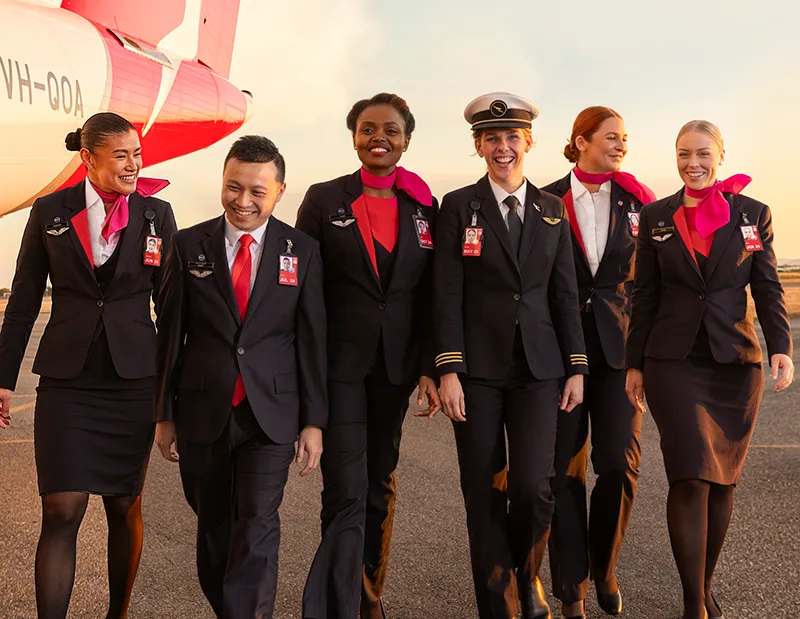Qantas (QF), often referred to as the “Flying Kangaroo,” is Australia’s flag carrier and one of the oldest airlines still in operation. Known for its long-haul routes, safety record, and premium service, Qantas remains one of the most respected employers in aviation across the Asia-Pacific region. For many aspiring cabin crew, landing a role with Qantas is seen as both an honour and a promising career step.
Here is a look at how much Qantas cabin crew earn in 2025, what benefits they enjoy, the requirements for joining, and how the hiring process works.
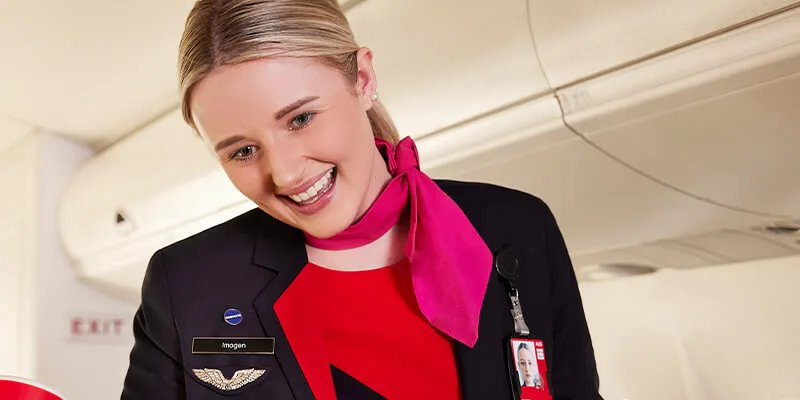
Qantas Cabin Crew Salary
Cabin crew at Qantas receive a combination of base salary, hourly pay, and allowances. On average, the total annual pay package for crew is between A$50,000 and A$70,000, though this varies depending on the type of flying (short haul or long haul), seniority, and rostered hours.
New recruits generally start at the lower end, earning a base salary of around A$41,000–A$45,000. To this, they add hourly pay when flying, typically A$30–A$35 per hour flown, and allowances for overnight stays or international layovers. International flights also often bring in higher allowances, sometimes adding several thousand dollars annually.
Experienced crew and those promoted into senior roles such as Cabin Supervisors can expect to earn closer to A$75,000–A$85,000 per year. The salary package is considered competitive when compared to regional carriers in Asia or even European full-service airlines.
A typical breakdown for Qantas cabin crew is:
- Base salary: A$41,000 – A$55,000
- Hourly flying pay: A$30 – A$35 per hour
- Layover allowances: A$5,000 – A$10,000 annually
- Total annual package: A$50,000 – A$75,000+
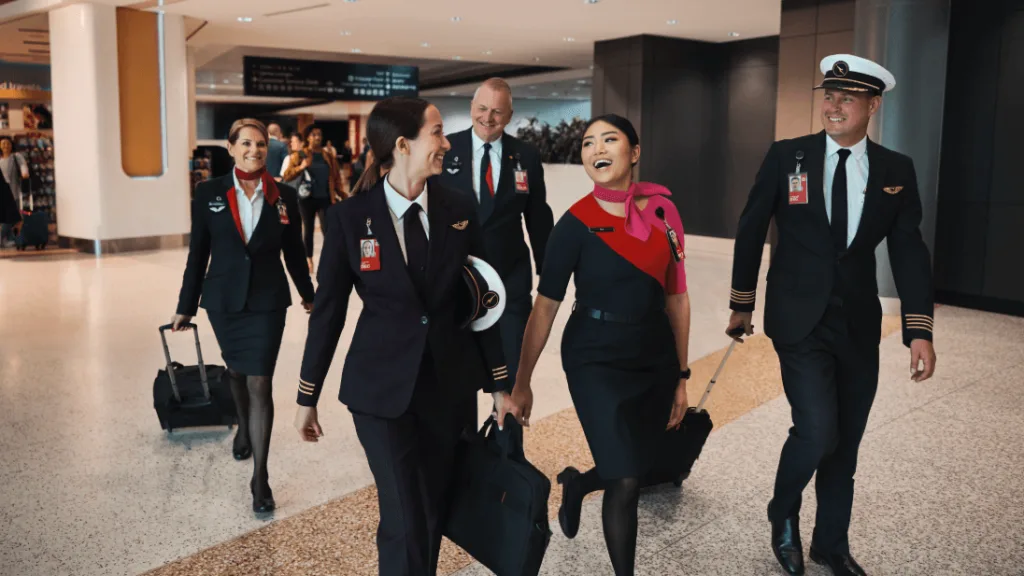
Benefits of Working as Qantas Cabin Crew
Beyond pay, Qantas offers a wide range of benefits that make the job attractive:
- Travel perks – Discounted and standby tickets for staff, immediate family, and sometimes friends. Moreover, these extend to partner airlines through oneworld, giving access to routes worldwide.
- Pension and superannuation – Employees receive contributions to superannuation funds, helping build long-term savings.
- Healthcare – Medical coverage is also included, with access to support for health and wellbeing.
- Discounts – Crew get discount rates at hotels, car hire firms, and retail partners.
- Career development – Opportunities exist to move into senior in-flight roles, ground-based roles, or corporate positions within the Qantas Group.
- Roster stability – While rosters change month to month, Qantas provides structured schedules that allow for reasonable work-life balance compared with some carriers.
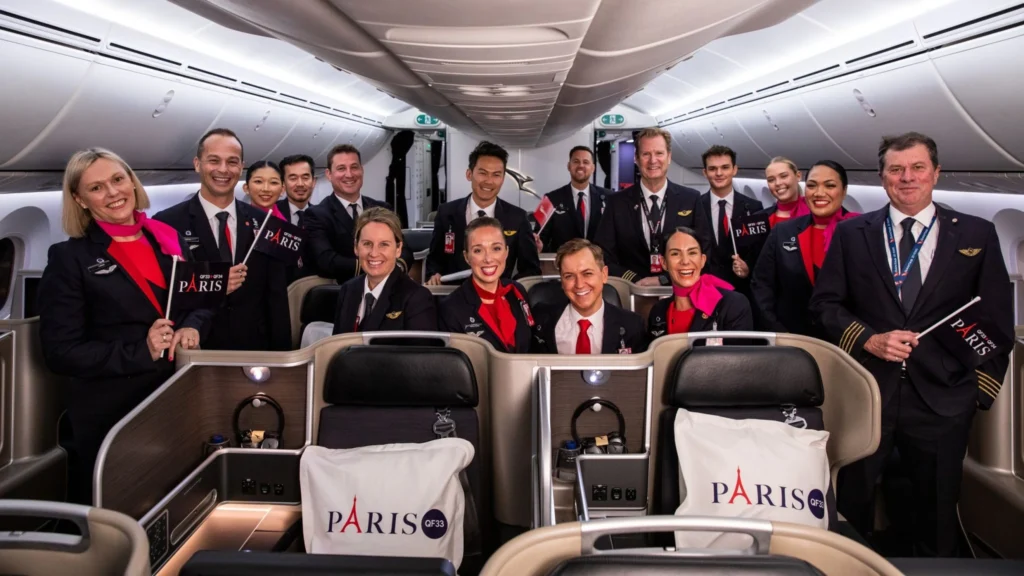
Requirements to Become Qantas Cabin Crew
Qantas has clear eligibility standards to ensure crew can perform the role safely and effectively. Applicants must meet:
- Age: Minimum 18 years old.
- Height: Must reach at least 212 cm with arms extended, to access emergency equipment.
- Education: Completion of Year 12 or equivalent.
- Work rights: Must have the legal right to live and work in Australia.
- Passport: Valid passport with unrestricted international travel rights.
- Background check: Must pass a criminal history check and provide a 10-year employment/education record.
- Medical: Successful completion of a medical examination, including eyesight and hearing standards.
- Swimming ability: Must be able to swim 50 metres unaided.
- Customer service skills: Prior experience in hospitality, tourism, or customer-facing roles is highly regarded.
Language skills beyond English are also seen as a plus, especially on international routes where crew interact with passengers from diverse backgrounds.
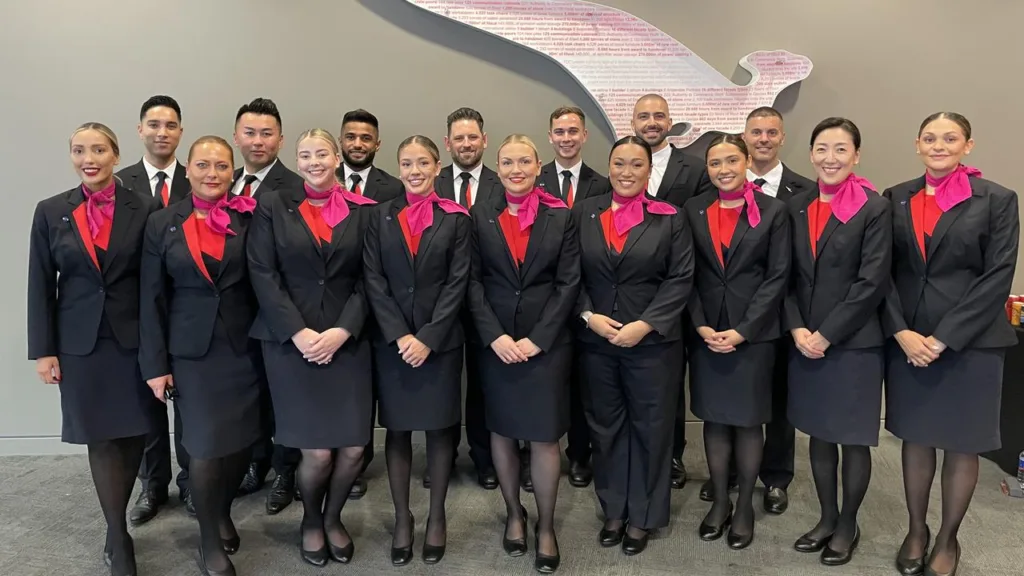
Hiring Process at Qantas
Becoming cabin crew at Qantas is highly competitive, with thousands applying for limited positions each year. The recruitment process tests both technical suitability and interpersonal qualities.
- Online Application: Applicants begin with an online application via the Qantas careers portal, submitting personal details, education history, work experience, and a CV.
- Online Assessments: Shortlisted candidates need to complete online aptitude and personality tests. These often include situational judgement tests to gauge decision-making in customer service scenarios.
- Assessment Day: Candidates who pass the online stage are invited to an in-person assessment centre. Here they take part in group exercises, role plays, and face-to-face interviews. Recruiters look for teamwork, communication skills, and the ability to stay calm under pressure.
- Medical and Background Checks: Before being offered a role, candidates undergo a medical examination to confirm they meet Qantas’ health requirements. Security and background checks are also completed.
- Training Programme: Qantas invites successful applicants to its training school. Training runs for around six weeks and includes safety and emergency procedures, service delivery, cultural awareness, and first aid. On completion, new crew receive their wings and officially join the airline.
As a whole, this careful process ensures only the most capable and customer-focused individuals represent Qantas in the skies.
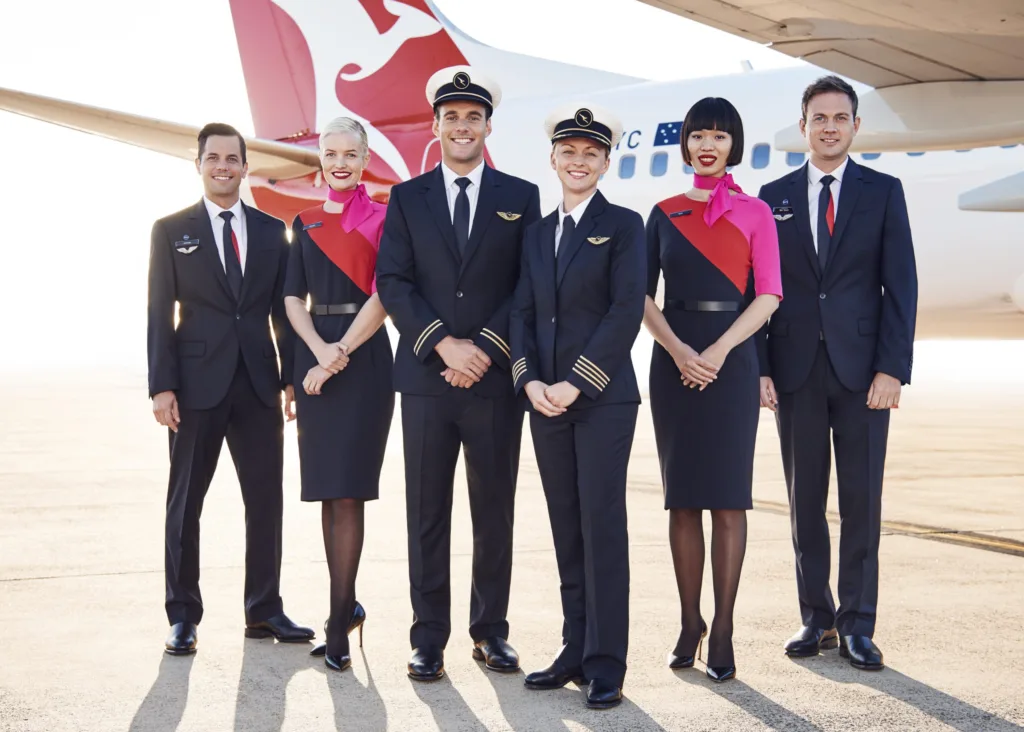
Qantas Cabin Crew Pay Compared with Other Airlines
When compared to other carriers in the region, Qantas offers strong pay and conditions. For instance, some Asian airlines start cabin crew on packages worth closer to A$30,000–A$40,000 annually, significantly less than Qantas’ base. Low-cost carriers within Australia, such as Jetstar, also tend to offer lower starting salaries.
Globally, Qantas sits in a similar bracket to European full-service airlines like Lufthansa or British Airways, but it outpaces many low-cost rivals in terms of benefits and allowances.
Qantas Airways Fleet in 2025
| Aircraft | In Service | Orders | Notes |
|---|---|---|---|
| Airbus A321XLR | 2 | 46 | First 3 aircraft to arrive with 180 economy seats in 2025. Order with 94 options across A220 & A320neo families. To replace Boeing 737-800. |
| Airbus A330-200 | 16 | — | To be replaced by Boeing 787-9 from 2027. 10 aircraft to be retrofitted from 2025. |
| Airbus A330-300 | 12 | 1 | To be replaced by Boeing 787-10 from 2028. Includes 2 Finnair-leased aircraft, one more for Sydney–Honolulu route. |
| Airbus A350-1000 | — | 24 | Deliveries from 2026. To be used for Project Sunrise routes. Additional 12 on order for 2028, will replace Airbus A380. |
| Airbus A380-800 | 10 | — | Nine in service, final aircraft to be reactivated by end of 2025. To be replaced by A350-1000. |
| Boeing 737-800 | 76 | 3 | To be replaced by Airbus A321XLR starting 2025. 42 aircraft to get cabin retrofits from 2027. |
| Boeing 787-9 | 14 | 4 | Four more ordered in 2023 (delivery from 2027). Will replace A330-200. |
| Boeing 787-10 | — | 8 | Deliveries from 2027. To replace Airbus A330-300. |
| Total | 130 | 86 |
Bottom Line
Qantas cabin crew salaries in 2025 remain competitive, with base pay starting above many regional rivals and total packages reaching as high as A$80,000 for senior crew. When combined with benefits like staff travel, superannuation, and healthcare, the job offers both financial stability and lifestyle advantages.
The requirements are firm, and the hiring process is tough, but for those who succeed, the role provides not just a steady career but also the chance to be part of Australia’s most recognised airline brand. Life on board is demanding, but for many, the reward of travel, teamwork, and growth makes the journey worthwhile.
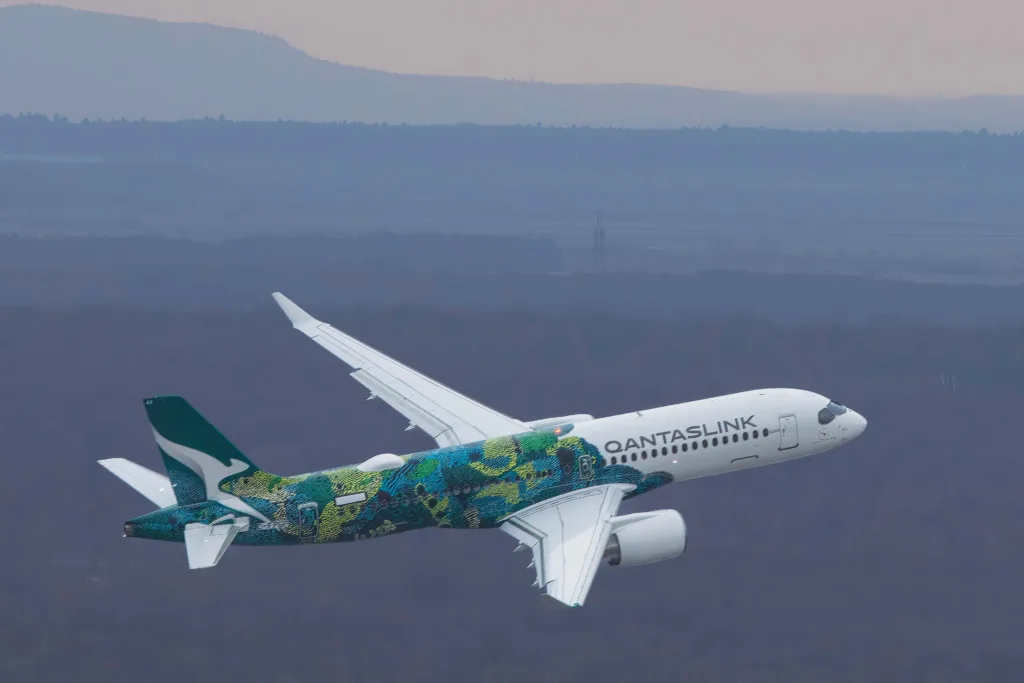
FAQs – Qantas Cabin Crew Salary
1) How much does a Qantas cabin crew member earn?
A new recruit typically earns between A$41,000 and A$45,000 in base pay. With hourly flying pay and allowances, first-year earnings usually reach A$50,000–A$55,000.
2) Do Qantas cabin crew get free flights?
Crew do not fly entirely free, but they receive heavily discounted standby tickets for themselves and their families. Discounts are also available through the oneworld alliance.
3) How long is Qantas cabin crew training?
Training lasts around six weeks and includes service skills, safety drills, medical training, and cultural awareness modules.
Please join our Telegram Channel for the latest aviation updates.

